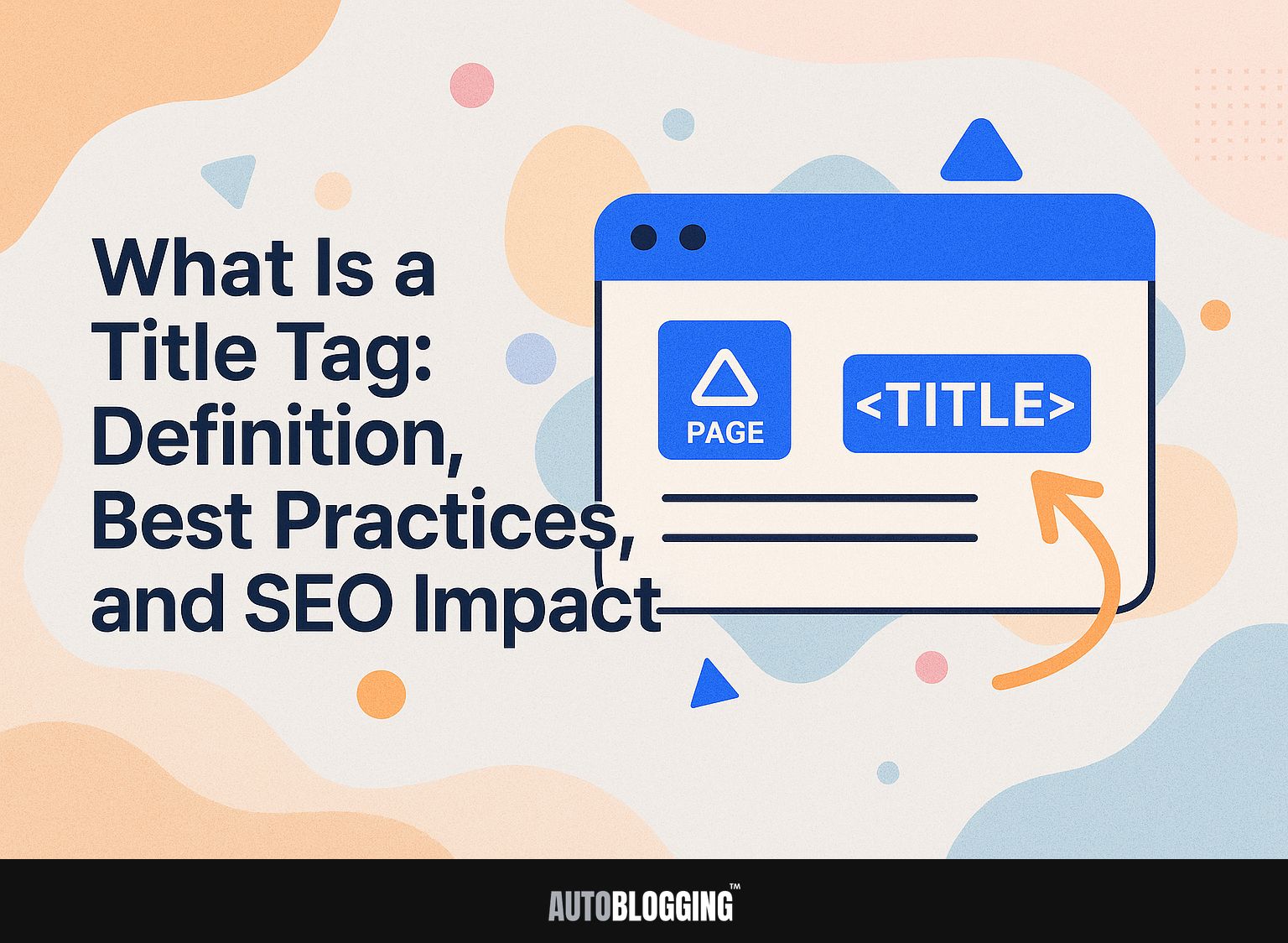
Knowing what a title tag is important for improving your presence in search engine results pages (SERPs). According to Google and tools like Moz Pro, a good title tag can increase click-through rates and improve how users interact with your content. In this article, we will explain what title tags are, offer useful advice, and talk about how they impact SEO, helping you make your website more noticeable and compete with trending topics on Twitter.
Key Takeaways:
- A title tag is an HTML element that serves as the title of a webpage and appears in search engine results.
- Writing title tags well can strongly affect a website’s SEO. It can increase the number of clicks, improve search engine positions, and get users more involved.
- Following best practices, such as using relevant keywords, avoiding duplication and keyword stuffing, and utilizing branding, can maximize the effectiveness of title tags.
Contents
1. What is a Title Tag?
A title tag is an HTML element that specifies the title of a web page, and it appears in browser tabs and SERPs, influencing both clicks and SEO rankings.
To improve your title tags, make each one unique and short-preferably less than 60 characters. For instance, Amazon uses specific title tags like “Buy Books Online – Huge Selection, Lowest Prices” which reflect content and encourage clicks.
Use tools such as Moz or Ahrefs to check competitors’ title tags and find good keywords. Try to include relevant keywords naturally; for example, if your page talks about digital marketing tips, use a title like “Top 10 Digital Marketing Strategies for 2023.” This approach improves SEO and helps users easily understand the importance of your content.
2. Importance of Title Tags in SEO
Title tags significantly affect SEO by directly influencing click-through rates (CTR) and helping search engines understand a page’s content and search intent.
A unique title tag can increase CTR by up to 36%, according to Moz Pro data. To make your title tags better, make sure they are short (50-60 characters), include important keywords, and clearly describe the page content.
Instead of using a common title like “Welcome to My Blog,” try something more detailed and interesting, like “10 Effective Tips for Sustainable Gardening.”
Check title tags often to see how well they are working and change them based on results to improve website visits and search engine positions.
Definition of Title Tags
Title tags are the text in the HTML header of a webpage, important for SEO and helping users recognize the page. It’s worth noting that other elements, like alt tags, also play a crucial role in SEO (learn more about their impact in our guide on alt tags and Exif data).
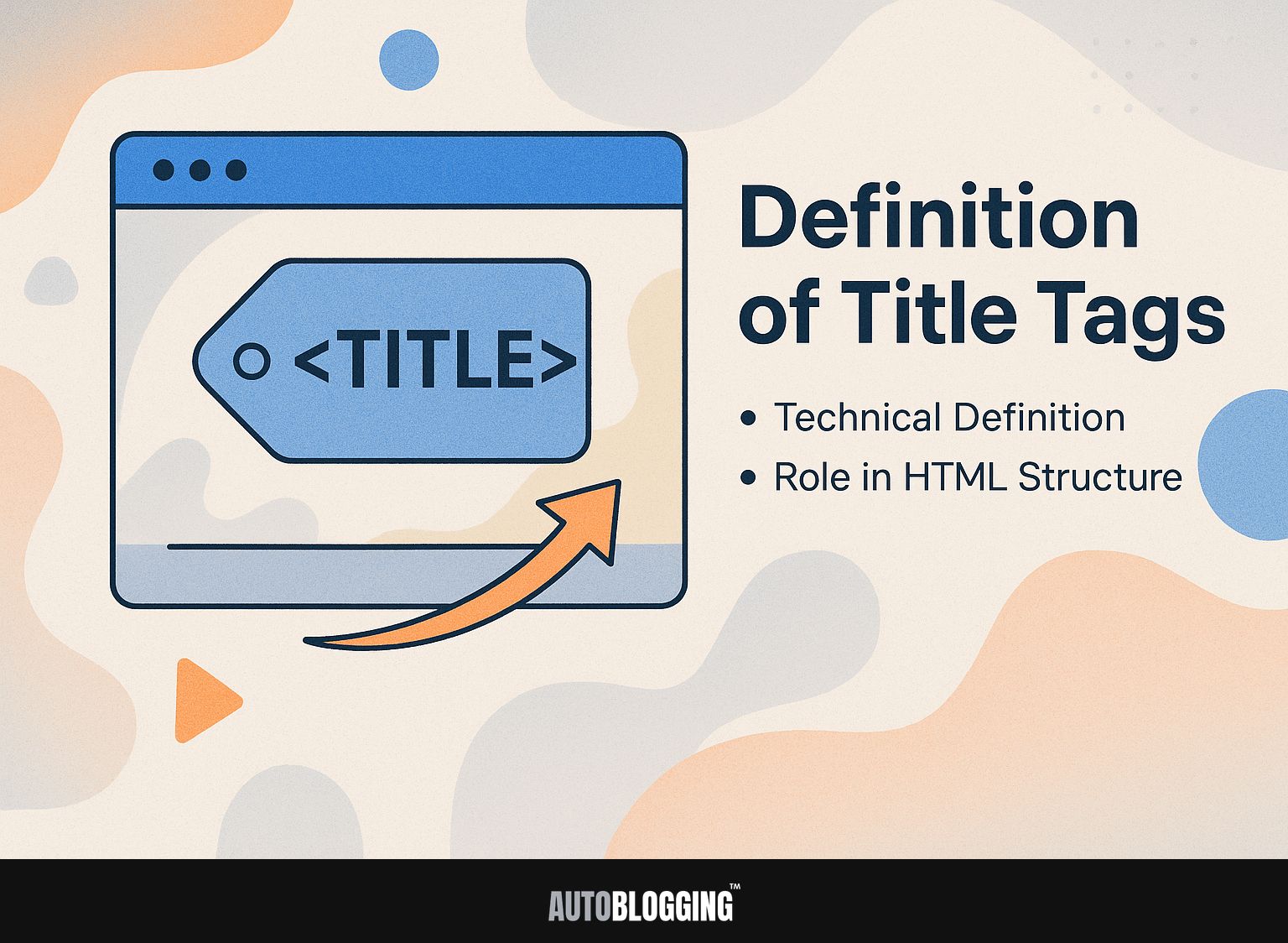
1. Technical Definition
A title tag is placed in the HTML code and should usually be 50-60 characters long to improve visibility. This tag is important for SEO because it tells search engines what the page is about.
A good title could include the main keywords related to your content at the start of the title. Avoid keyword stuffing, as it can negatively impact your ranking.
Use tools like Yoast SEO to analyze your title and make adjustments based on readability and length. Following these guidelines helps improve click-through rates and search engine visibility significantly.
2. Role in HTML Structure
Title tags are positioned within the head section of HTML, serving as a key metadata element that helps search engines index and rank pages effectively.
A well-crafted title tag can significantly improve your SEO outcomes. It should be concise, ideally under 60 characters, and include relevant keywords at the beginning.
For example, instead of using a title like ‘Blog’, opt for ‘Digital Marketing Tips for 2023’. Title tags are important, but meta descriptions also matter because they give information and encourage people to click your link.
Keep it under 160 characters, summarize your content, and use relevant words to increase visibility.
Best Practices for Title Tags
Using proper title tags can help a webpage look better in search results and increase user engagement, which is important for effective SEO. For a deeper understanding of how title tags fit into the broader concept of on-page optimization, see also What is On-Page SEO: Techniques, Importance, and Best Practices.
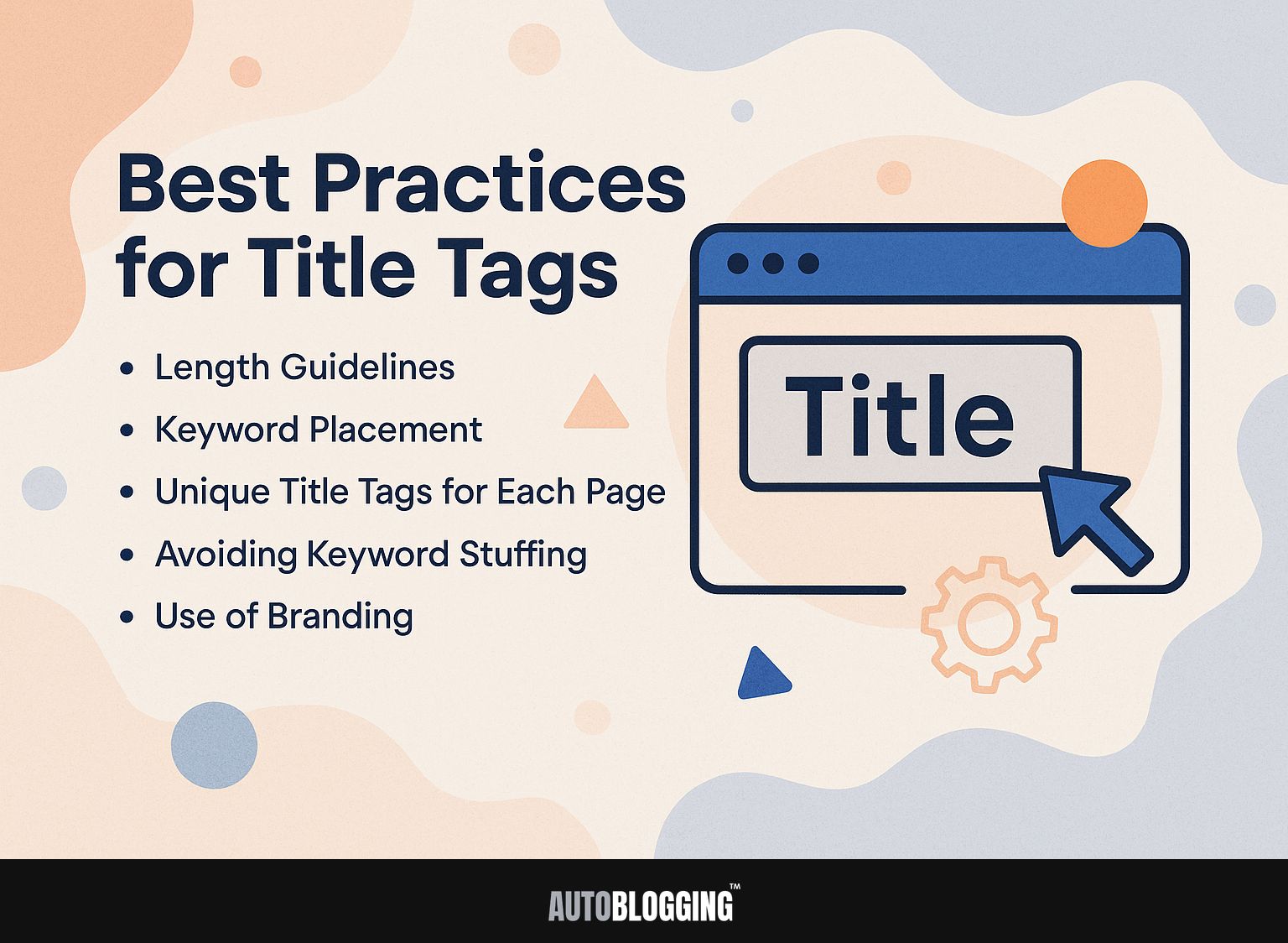
1. Length Guidelines
Research indicates that title tags should ideally be between 50-60 characters to avoid truncation in SERPs, ensuring maximum visibility.
Exceeding this character range can lead to important keywords being cut off, negatively affecting click-through rates (CTR).
For example, a title such as “10 Effective Strategies to Improve Your Content Marketing Efforts This Year” (68 characters) might get cut off in search results, showing only “10 Effective Strategies to Improve Your Content Marketing…”.
Successful examples adhering to the optimal range include:
- “Content Marketing Tips for 2023” (32 characters)
- Improve Your SEO with 5 Simple Methods
Regularly testing new titles and making adjustments can increase the visibility and engagement of your content.
2. Keyword Placement
Strategically placing primary keywords near the beginning of title tags can improve search relevance and help align with user intent.
To improve where you place keywords, use tools like Moz Pro to check which keywords bring visitors to similar content.
For example, if your main keyword is “best coffee makers,” a good title would be “Best Coffee Makers: Our Top 5 Choices for 2023.” This approach improves search engine results and remains clear for the reader.
Consider using related keywords in the meta description and headers to create a connected setup, making your content easier to locate and more relevant.
3. Unique Title Tags for Each Page
Each webpage should have a unique title tag to avoid competition among your own pages, enhancing overall site SEO performance.
Unique title tags improve click-through rates (CTR) and help search engines understand your content better. For example, a case study of ‘ExampleWebsite.com’ showed a 30% increase in organic traffic after they implemented unique title tags.
To create effective title tags, follow this checklist:
- Keep it under 60 characters
- Include relevant keywords
- Make sure each tag matches the theme of the page.
Tools like Moz and SEMrush can analyze your existing tags and suggest improvements for better rankings.
4. Avoiding Keyword Stuffing
Avoiding keyword stuffing in title tags is essential, as it can lead to penalties from search engines and poor user experience.
To effectively manage keyword density, aim for 1-2%, ensuring your title tags remain relevant and engaging. Use tools like SEMrush or Yoast SEO to track your keyword usage in real-time.
For example, if your main keyword is ‘digital marketing,’ include it in your title in a natural way without repeating it too much, like ‘Effective Digital Marketing Strategies for 2023.’ This method helps your content read smoothly while being search engine friendly.
Regularly review your page’s performance metrics to make necessary adjustments.
5. Use of Branding
Including brand names in title tags helps with brand recognition and can lead to more clicks, especially for well-known brands.
For example, companies like Nike and Apple often use their names with related keywords, improving visibility while strengthening their brand image.
Nike’s title tags might read “Nike Running Shoes – Performance & Style,” directly appealing to search queries while prominently displaying their brand.
Similarly, Apple’s use of “Apple iPhone 14 – Latest Technology & Features” integrates both brand and product specifications, effectively capturing user intent. This strategic approach improves SEO results and also increases consumer trust and loyalty.
Common Mistakes to Avoid
Knowing common mistakes in title tags is important for getting good SEO results and improving user interaction, which helps prevent expensive errors. Understanding these concepts is crucial, much like grasping what meta tags are and their SEO impact for a comprehensive SEO strategy.
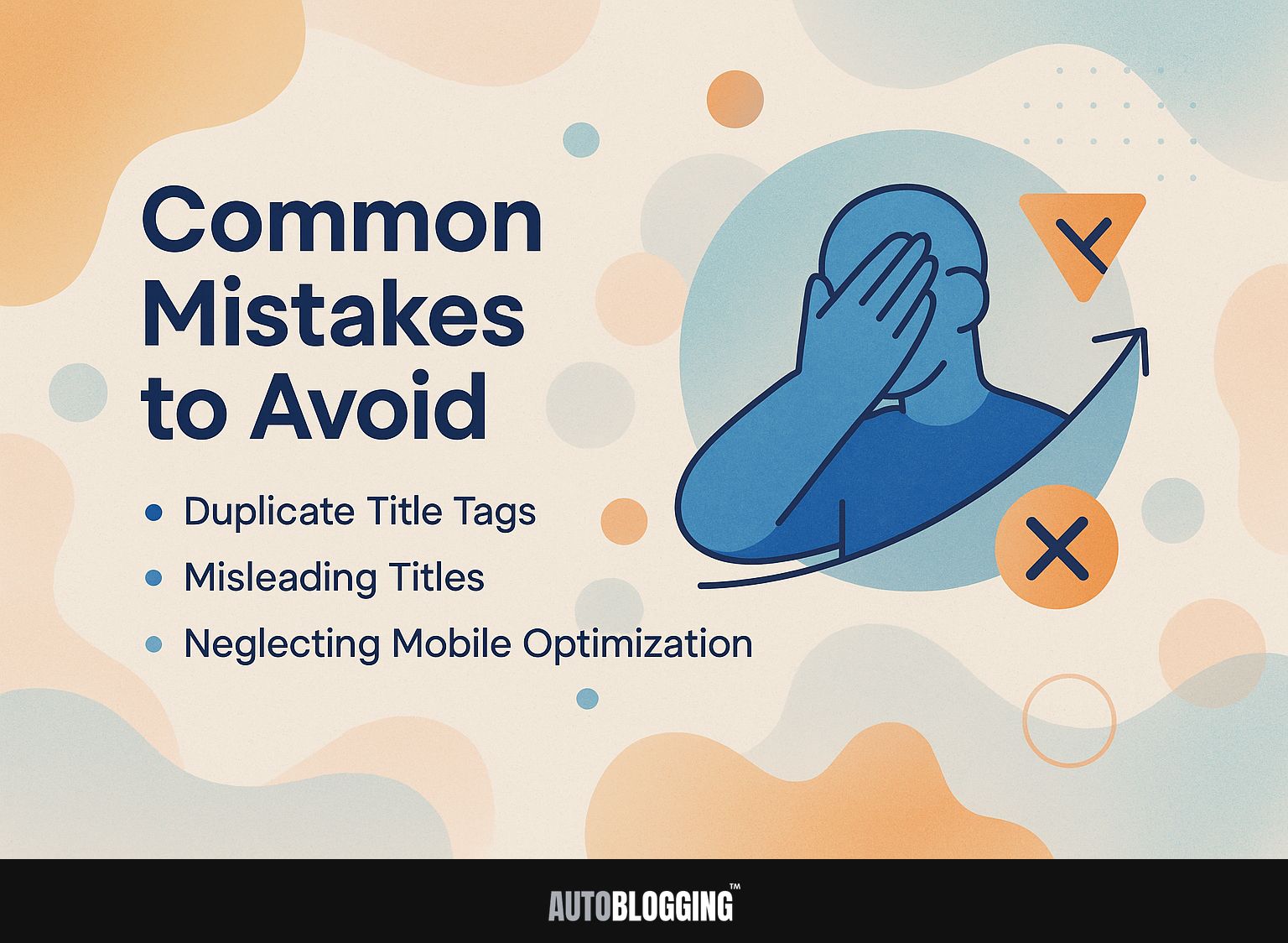
1. Duplicate Title Tags
Duplicate title tags can cause search engines to struggle with indexing, leading to penalties and reduced visibility in search results.
To identify and fix duplicate title tags, use tools like Screaming Frog SEO Spider. Simply crawl your website, then sort the results by title tags to spot duplicates easily.
For example, if both ‘Home’ and ‘Homepage’ are used across various pages, this inconsistency can confuse search engines. Another option is Google Search Console, where under the ‘Coverage’ report, you can find URL inspection tools that highlight duplicate issues.
Fix these by ensuring each page has a unique title that reflects its content, improving both SEO and user experience.
2. Misleading Titles
Misleading titles that do not reflect the content can result in high bounce rates, negatively affecting SEO rankings and user trust.
To make sure title tags match the content, start by researching keywords using tools like Google Keyword Planner or SEMrush. Focus on phrases that are important to your audience.
Next, analyze your existing titles against their corresponding analytics-look for pages that have high bounce rates or low engagement metrics. Make these titles clearer and more specific.
For example, if an article titled `Tips for Busy Professionals’ only offers generic advice, consider a more specific title like `5 Time-Saving Strategies for Busy Professionals in 2023.’ Checking and changing your titles often can make them more relevant and improve user trust.
3. Neglecting Mobile Optimization
More than half of web visits now come from mobile devices. Ignoring the adjustment of title tags for mobile can greatly affect how often your site is seen and interacted with.
To make sure your title tags work well on mobile devices, begin by using tools like Google’s Mobile-Friendly Test. Simply enter your URL, and the tool evaluates how your titles appear on mobile.
Aim for concise, under-60 characters to prevent truncation. For example, instead of ‘Complete Guide to Mobile SEO: Tips, Tricks, and Tools for Success,’ use ‘Mobile SEO Tips & Tools for Success.’
Regularly check and modify your titles using performance data to improve click-through rates and keep users interested.
SEO Impact of Title Tags
Title tags greatly affect SEO, influencing metrics like click-through rates and search rankings. For a deeper understanding of these aspects, consider the nuanced role of meta tags, which can further impact your SEO efforts, as discussed in our expert opinion on the types, best practices, and SEO impact of meta tags.
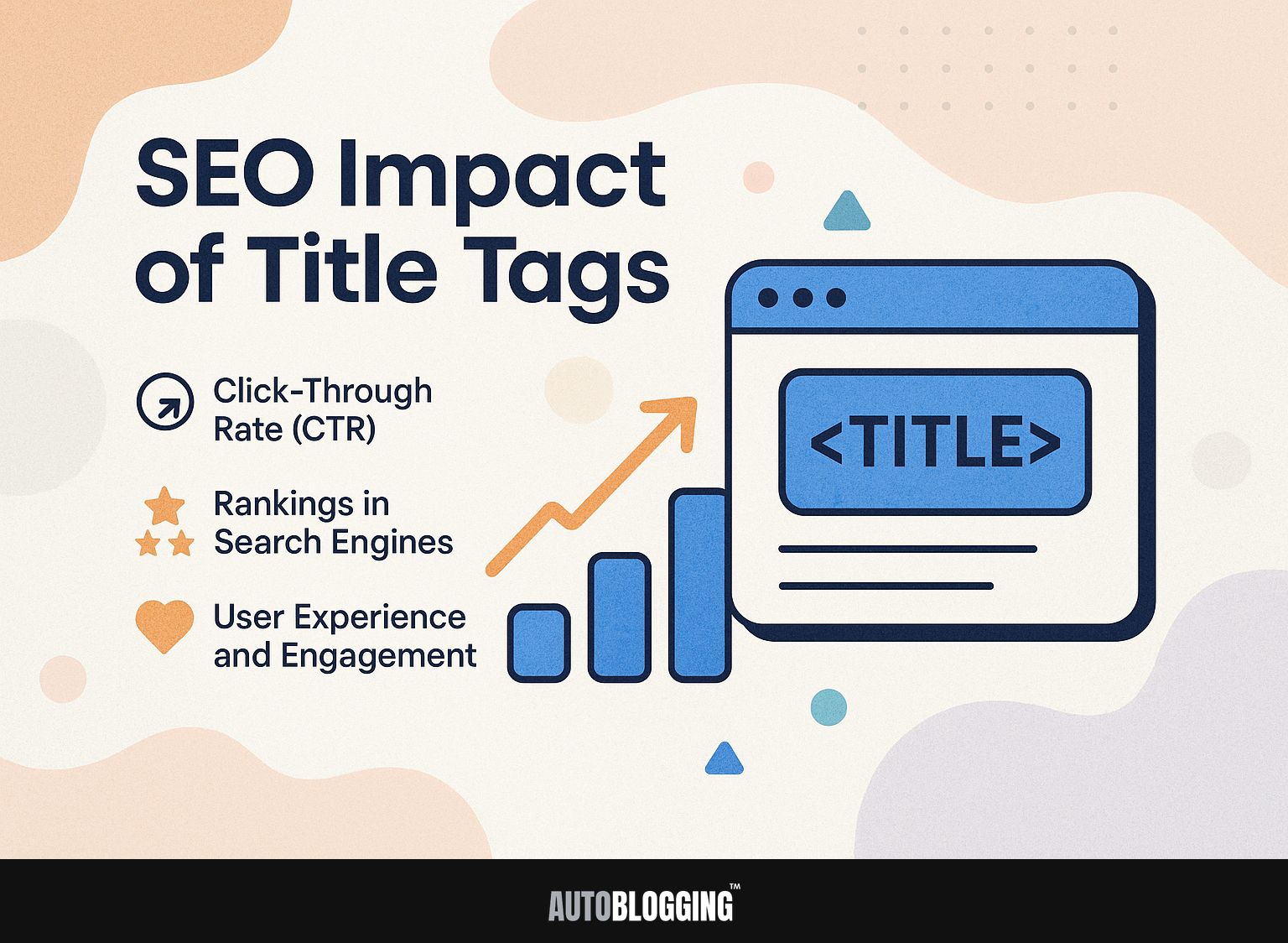
1. Click-Through Rate (CTR)
Better title tags can raise click-through rates (CTR) by up to 36%, leading to more organic site visitors.
Using A/B testing can illustrate the impact of title tags on CTR. For instance, a title tag revised from “Best Coffee Makers” to “Top 5 Coffee Makers for Your Kitchen – 2023 Review” might gain a higher CTR.
To improve your title tags, focus on the following actionable steps:
- Incorporate relevant keywords
- Keep it under 60 characters for search result visibility
- Create a sense of urgency or curiosity
Tools such as Moz or SEMrush allow you to analyze what others are doing and make your tags better to increase interaction.
2. Rankings in Search Engines
Title tags significantly impact search engine rankings, serving as a primary factor search engines use to determine relevance.
Improving title tags can greatly increase how often people see and click on your content. For example, a recent study revealed that incorporating target keywords and keeping titles under 60 characters can increase rankings by up to 20%.
A good example is ‘ExampleSite.com,’ which improved its title tags by adding specific product phrases. As a result, they climbed from the third to the first page of Google results within three months.
Regularly reviewing search terms with tools like Google Search Console can improve your approach to creating effective titles.
3. User Experience and Engagement
Good title tags improve user experience by clearly describing the content, leading to more interaction and fewer people leaving quickly.
Research indicates that pages with well-crafted title tags can increase their click-through rate (CTR) by up to 20% in search engine results. For example, a case study by Moz highlighted a website that revised its title tags, resulting in a 15% increase in organic traffic within a month.
Users are more likely to interact with interesting titles that show the content’s importance and what they can expect. Tools like Yoast SEO can check and improve title tags, ensuring they are short (50-60 characters) and contain key words for the best results.
Tools for Optimizing Title Tags
Using certain tools to improve title tags simplifies the process, helping you follow best practices and improve SEO outcomes. For a deeper understanding of how various meta tags, like title tags, contribute to SEO success, consider exploring the types and best practices of meta tags.
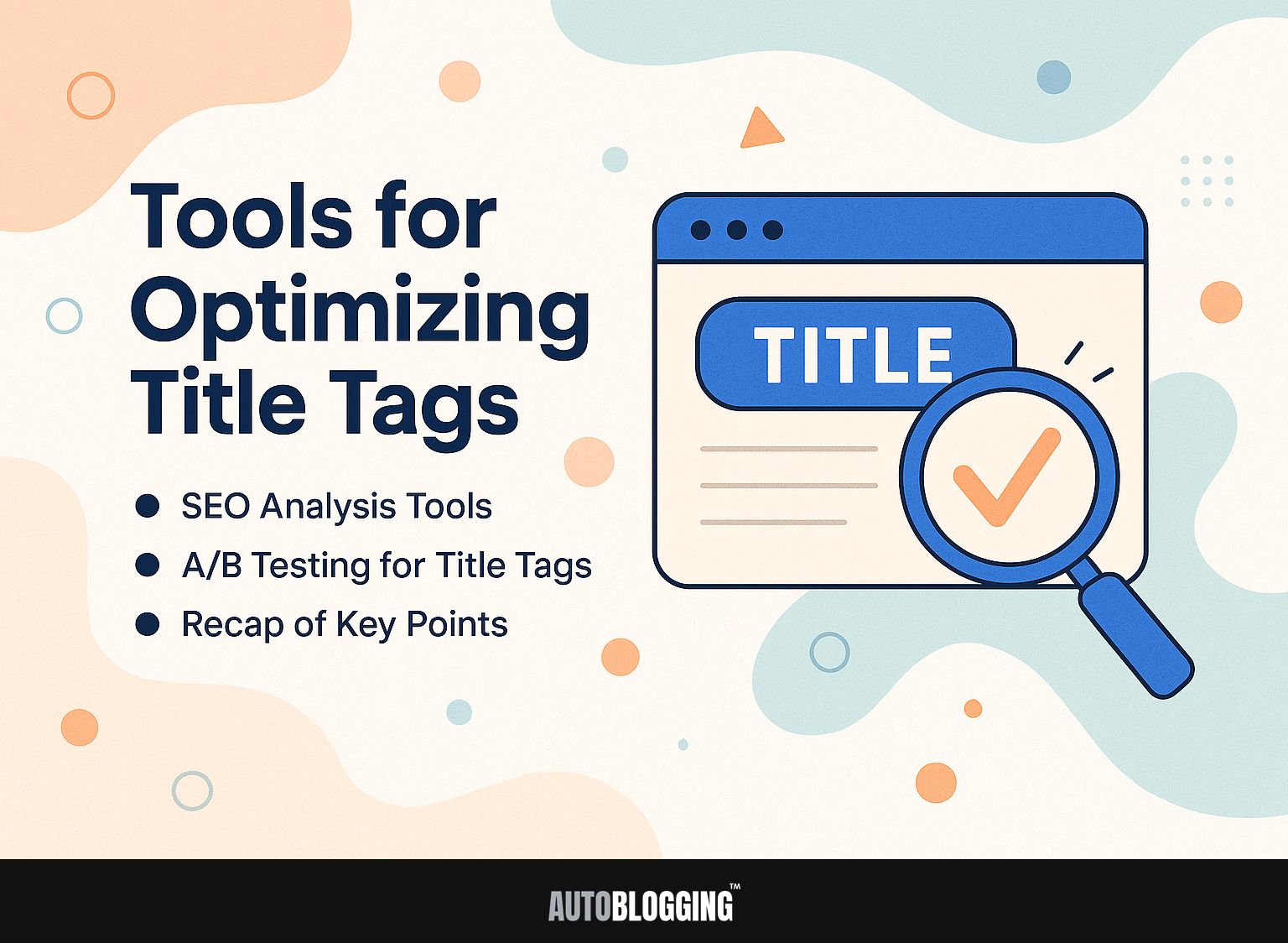
1. SEO Analysis Tools
Programs like Moz Pro ($99/month) and SEMrush ($119.95/month) provide detailed tools to check and make title tags better quickly.
Ahrefs ($99/mo) is included, providing thorough backlink analysis, keyword ideas, and practical advice for improving title tags. Users can use these tools to check their site and get targeted advice.
For instance, Ahrefs highlights underperforming title tags that don’t match search intent, while SEMrush provides keyword variations to improve click-through rates. Moz Pro’s ability to track changes over time lets users monitor their improvements.
By carefully improving title tags based on this information, users can greatly improve their SEO results.
2. A/B Testing for Title Tags
Testing different title tags with tools like Optimizely (starting at $49 per month) can reveal which versions get the most clicks and keep users engaged.
To set up your A/B test, begin by identifying your baseline title tag performance, measuring current click-through rates (CTR) through Google Analytics.
Next, create two or more title tag variations that are distinct yet relevant. Tools like Optimizely allow you to split traffic between these options easily.
After running the test for at least two weeks, analyze the metrics-focus on CTR, bounce rate, and average session duration.
For example, Booking.com improved its CTR by 15% simply by refining its title tags through A/B testing, demonstrating the tangible benefits of this method.
3. Recap of Key Points
To summarize, title tags should be distinct and match the content effectively, following best practices to make them work well for both search engines and users.
To create effective title tags, use these practical strategies:
- Begin by placing main keywords at the start of the title to improve search engine visibility.
- Keep your text between 50-60 characters to avoid cuts in search results.
- Use tools like Google’s Keyword Planner to identify popular search terms for your topic, and make sure each tag accurately describes the page content.
- For e-commerce sites, including product names can improve click-through rates significantly.
Frequently Asked Questions
1. What is a Title Tag?
A title tag is an HTML element that specifies the title of a webpage. It appears in the browser tab and as the clickable link in search engine results pages.
2. What is the Definition of a Title Tag?
The definition of a title tag is a brief and concise description of the content on a webpage. It helps search engines and users understand what the page is about.
3. What are the Best Practices for Creating Title Tags?
Some good tips for making title tags are using related keywords, keeping them shorter than 60 characters, and creating a different one for each page. Write an interesting title that encourages users to click on your link.
4. How Do Title Tags Impact SEO?
Title tags have a significant impact on SEO because they help search engines determine the relevance of a webpage to a user’s search query. A good title tag can help your website get noticed and bring in more visitors from search engines.
5. Why are Title Tags Important for SEO?
Title tags are important for SEO because they are one of the main elements that search engines use to understand the content on a webpage. They show up in search engine results, so they are among the first elements people notice when choosing to click on your link.
6. Does Every Page on a Website Need a Title Tag?
Yes, each page on a website needs its own title tag. This helps search engines understand the content on each page and allows users to easily identify what the page is about. It also improves the overall SEO of the website.
